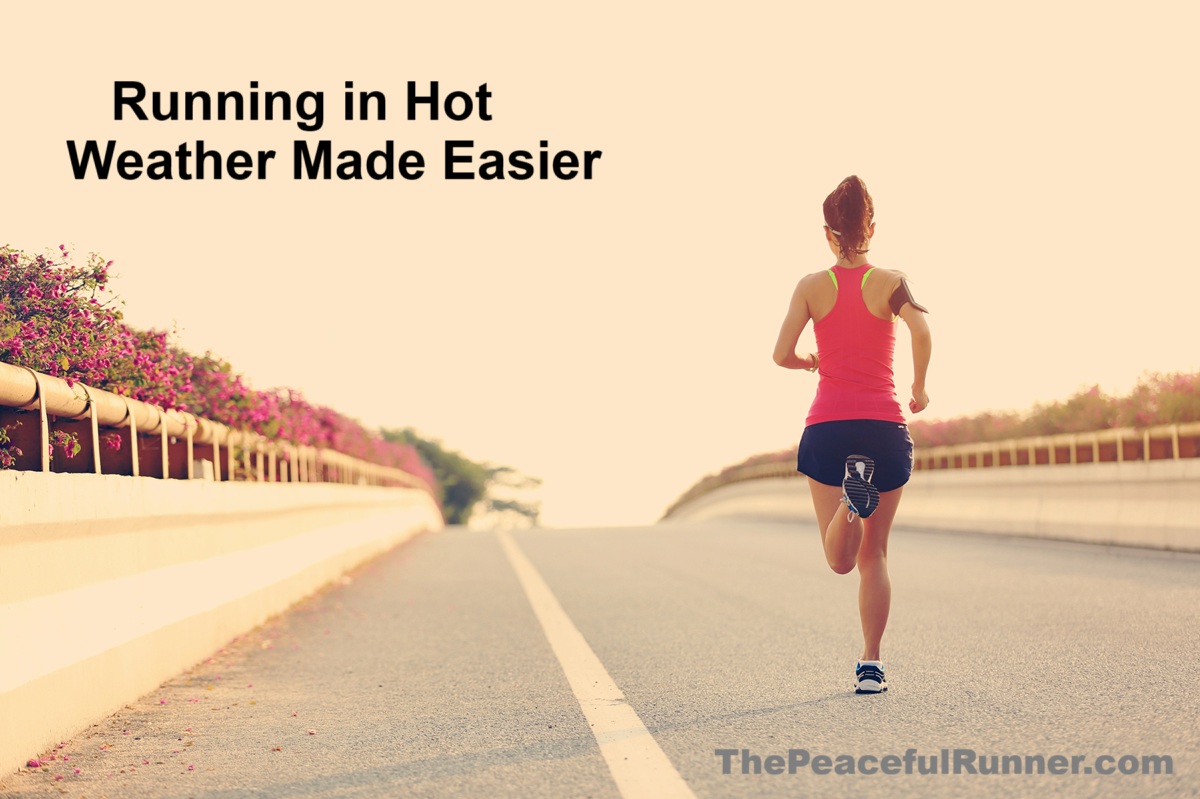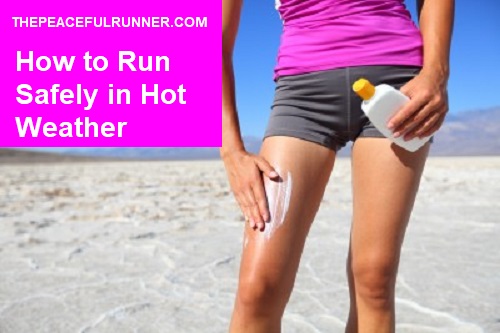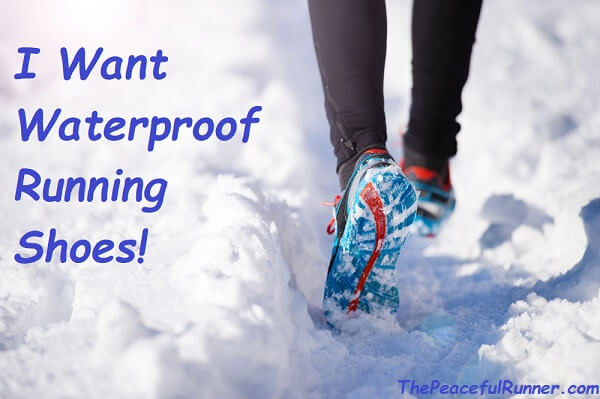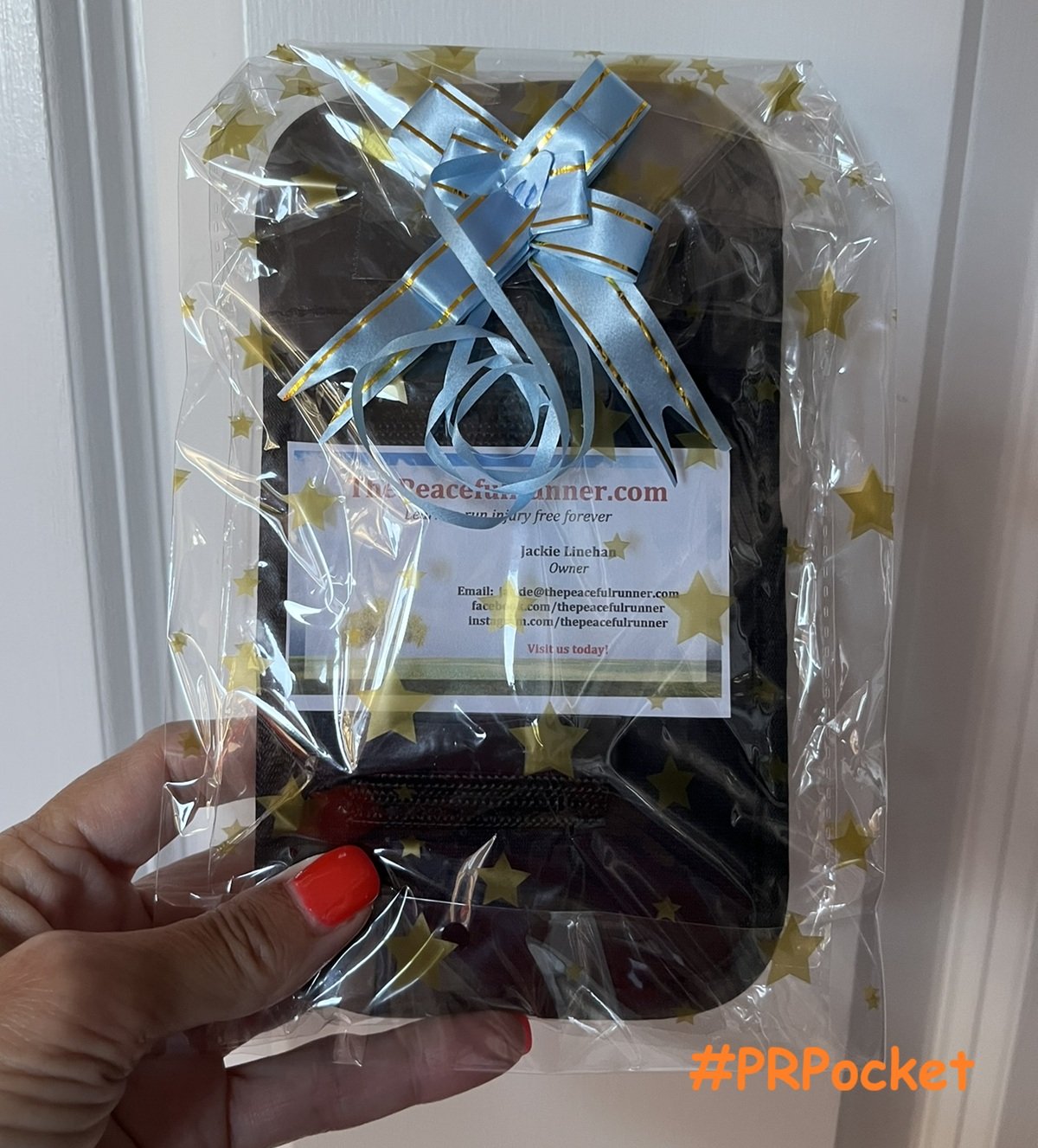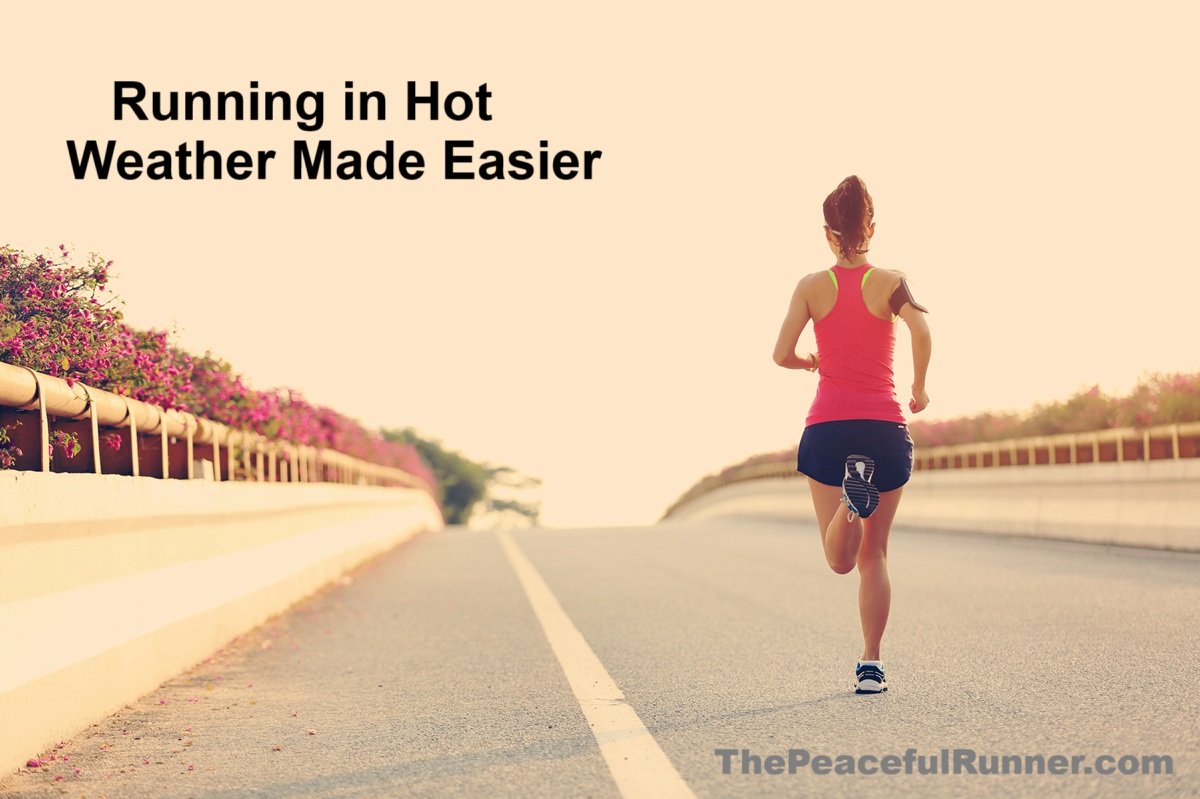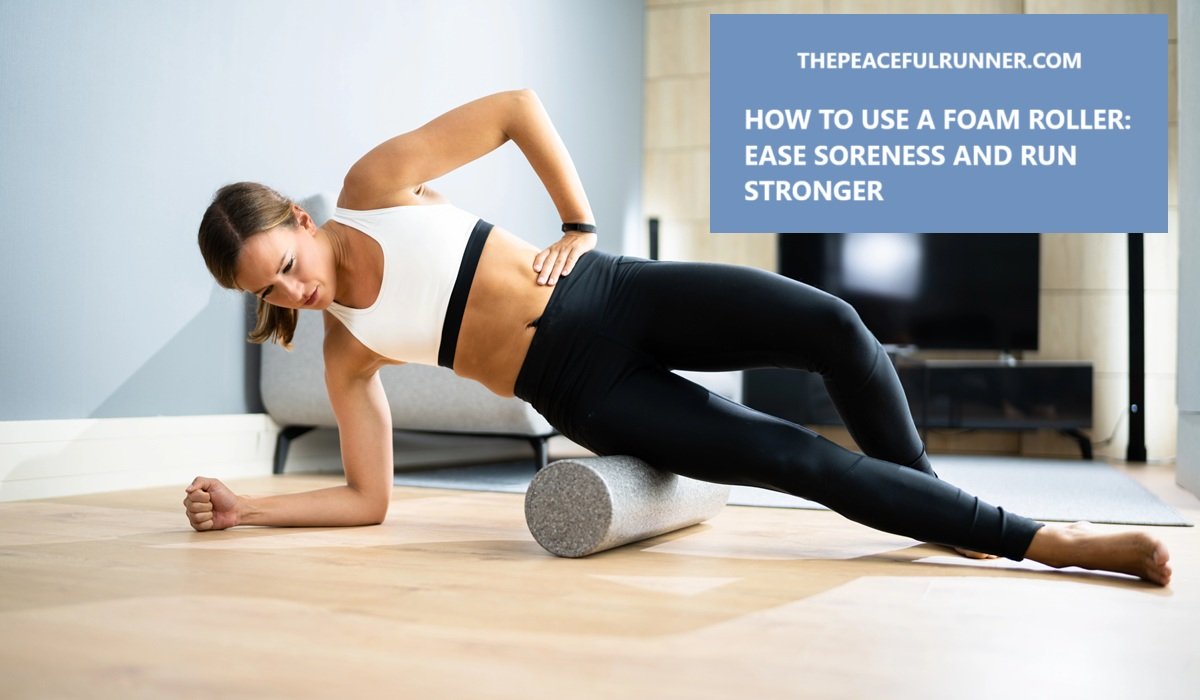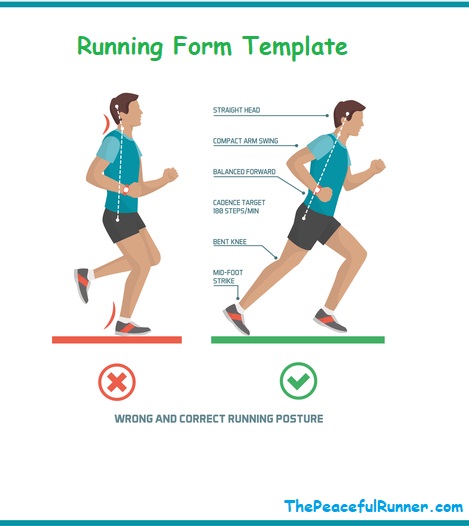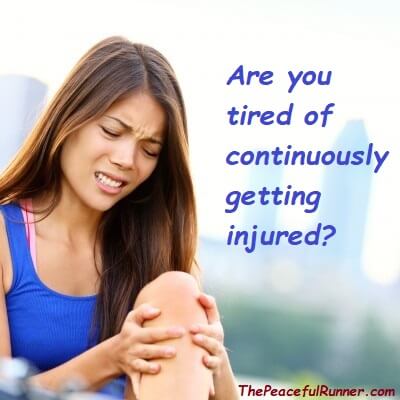- Home
- Hot Weather Running
Running in Hot Weather: What Every Runner Needs to Know!
FTC Disclosure: As an Amazon Associate, I earn from qualifying purchases. Learn more
Running in hot weather is something that runners have to contend with from time to time. It can be a difficult experience and it can become dangerous if we don't prepare properly.
We have natural defense mechanisms to protect us from stressing our bodies too much in these conditions. This is why our bodies want to slow down when we get too hot. We can take action to help our bodies feel
more comfortable while running in the heat and prevent the onset of heat related
illnesses!
When we run in hot weather conditions, our core body temperature increases and this triggers the body's natural defense mechanisms. The body begins to send more blood to circulate through the skin to help cool it down.
This means that our muscles receive less blood than normal resulting in an increased heart rate. Running begins to feel harder and there is more stress placed on the body. When humidity increases, sweat remains on the skin making it more difficult for the body to cool itself.
It is important that we adjust our speed when we run in temperatures that are hotter than our bodies are accustomed. If we push ourselves too hard, we may develop a heat related illness and some of these are dangerous. Please watch for signs that you might be overdoing it and use the tips below to help you properly prepare when running in hot weather.
Symptoms of Heat Related Illnesses
There are three heat illnesses that a runner may be subjected to while running in hot weather.
The long distance runner is most at risk as the length of time exposed to these conditions increases the possibility of becoming ill.
Three heat related illnesses and their symptoms are:
- Heat Stress - While experiencing heat stress, you will need to run slower than normal. You are sweating profusely and you will probably experience cramps in the legs or in the diaphragm. Your body temperature will probably still remain normal.
- Heat Exhaustion - This more severe level of heat illness is characterized by extreme fatigue, dizziness, loss of muscle control, nausea, vomiting, headaches, and an increase in body temperature. You may also experience chills and difficulty speaking. Your body is lacking in fluids and electrolytes which it needs to keep its cooling system working properly. If ignored or left untreated, this condition may lead to the most serious heat related illness.
- Heat stroke - This is a life threatening condition. Your body has stopped sweating and your body temperature has risen to a dangerously high level. You can experience disorientation, extreme weakness, confusion and eventually unconsciousness. This condition is a medical emergency and medical assistance must be obtained immediately to bring down the body temperature as soon as possible. If this happens to you, you probably won't have any memory of what happened. It is a serious illness; and if not treated immediately, it can result in a coma, brain damage, or even death.
In extreme hot weather conditions, it may be wise to consider other options such as running on a treadmill, an indoor track or deep water running in a pool or the sea using an aqua jogger belt.
But don't despair.... check out the following tips to help you feel more comfortable during those hot summer days....
Overcoming the Mental Challenge of Running in Hot Weather
One of the biggest hurdles in running during hot weather isn’t just physical—it’s mental. The discomfort, slower pace, and overwhelming heat can make even short runs feel like a struggle.
To overcome this, shift your mindset: instead of fighting the heat, accept it as part of the experience. Focus on your breath, your surroundings, and the simple act of moving forward. Use mantras, visualization, or even mindful running techniques to stay present and grounded. Remind yourself that running in challenging conditions builds resilience—not just in your body, but in your mind as well. With a peaceful, accepting approach, you'll find strength in the sweat.
Try the following affirmations:
- I am getting stronger and stronger.
- I love a challenge and this is just a challenge.
- This challenge will help me.
- I am comfortable in all temperatures.
Tips on How to Prepare for Running in Hot Weather
Follow these tips to have a safe and successful hot weather run:
- Increase your sodium intake. You will be sweating more than usual. The sodium will help you maintain a healthy fluid level.
- Increase your vitamin C, potassium and calcium levels. Because we lose vitamin C, potassium and calcium when we sweat, ensure you have sufficient amounts of these nutrients in your diet.
- Drink more water. Increase the amount of water you normally drink before, during and after you run. If you are in a climate hotter than you are used to, you will be sweating more than usual even when you are not running. These fluids must be replaced. Use a hydration vest or hydration belt while running to ensure you always have access to water.
- Drink an ice slushy or slurry before you run. This study showed that runners were able to run longer in a hot environment after drinking a slushie as opposed to drinking cold water. The effects won't last for the duration of a long run, but it will make the initial part of the run easier by keeping your body cooler for a longer period of time.
- Cool your body. Another way to pre-cool your body before running is to wear an ice bandana or cooling vest and/or if possible, sit in an air-conditioned room before running as recommended in this study on Pre-cooling can boost endurance.
- Replace electrolytes. Use sport drinks or coconut water for hydration to help replace valuable electrolytes that are lost during long runs. If you will be running more than an hour, these drinks will help you feel less fatigued. They also aid in recovery after your hot weather run.
- Slow down when necessary. Adjust your pace to the temperature. Slowing your pace will reduce the risk of a heat related illness.
- Use shade whenever available. Run in the shade whenever possible to avoid direct heat from the sun. Early morning runs will provide a more comfortable temperature.
- Take walk breaks. They give your body a fighting chance against the heat. They will aid your body's cooling mechanism to bring down its temperature and provide you with a short recovery period. Plan to take regular and more frequent than normal walk breaks in hot weather.
- Dress for the weather. Wear light coloured materials that enhance evaporation - no cotton. Wear a hat to protect your head and carry a handkerchief to wipe away sweat. A sponge that you can soak with water regularly is quite refreshing and provides a great cooling aid.
- Cool down quickly. When you are finished running in hot weather, try to cool down as quickly as possible. Rest in a shaded area or an air-conditioned room. A cold shower will help you cool down and bring your temperature back to normal. The sooner you cool down, the faster you will recover from your hot weather run.
My Experience of Running in Hot Weather
A number of years ago, I relocated from the cooler climate in Canada to the hot weather of Singapore as it's very close to the equator. Its temperature is consistently hot all year. The daily temperature is usually about 33°C (91°F) and the humidity makes it feel more like 40°C (104°F).
During the first couple of weeks, I really struggled to run in this climate. It felt very difficult and I wasn't enjoying it. I thought I was going to have to give up running outdoors completely. Some days I would feel ill after running, and I began having leg cramps (charley horse) at night. I attributed these effects to dehydration, lack of sodium and possibly lack of calcium and potassium as well.
I changed my diet—particularly the sodium intake. I was determined to succeed (as everyone knows all runners are a little obsessed), and I continued to run regularly. My perseverance began to pay off as I started to enjoy running more in my new "hot" location.
Running got easier, the leg cramps stopped, and I felt better after a run. I even managed to do some speed training from time to time. It is never going to be easy running in hot weather. I didn't run as fast as I normally would, but I was determined to maintain my running fitness while I lived there! Whenever I began to struggle with running in the heat, I concentrated on keeping my form strong, thinking positive, reinforcing thoughts, and this approach helped me continue to run during the four years that I lived there!
My experience in Singapore continues to help me whenever I am running in hot weather.
Final Words...
Running in hot weather doesn’t have to derail your training or compromise your enjoyment. With mindful preparation, proper hydration, and smart adjustments to your routine, you can continue to run safely and comfortably—even in the height of summer. Listen to your body, respect the heat, and embrace the slower pace when needed. By doing so, you’ll build both resilience and confidence, making you a stronger, more adaptable runner all year round. Stay cool, stay safe, and keep enjoying your peaceful runs—no matter the temperature.
Related links:
Stop a Charley Horse Instantly!
Back to top of Running in Hot Weather
- Home
- Hot Weather Running
FTC Disclosure: As an Amazon Associate, I earn from qualifying purchases. Learn more
NEW FEATURE - DISQUS COMMENTS!
Login using Facebook, Twitter, Google or Disqus.
Recent Articles
-
Winter Running Tips and the Best Waterproof Running Shoes
Nov 15, 25 01:55 PM
-
When the Music Stops, Awareness Begins
Nov 05, 25 10:54 AM
-
Get yours in time for gift giving!
Oct 24, 25 12:32 PM
-
Change How You Deal with Running Pain
Oct 10, 25 08:53 AM
-
Surprising Benefits of Backwards Running
Sep 15, 25 12:40 PM
-
It's an Awesome Product!
Aug 28, 25 09:25 AM
I went out for a walk this morning and I used the #PRPocket for the first time. I had to check at least 3 times because I thought I lost my phone (iPhone -
Running in Hot Weather: What Every Runner Needs to Know!
Aug 14, 25 01:00 PM
-
Sick of Dieting? You’re Not Alone — And There Is a Better Way.
Jul 30, 25 12:18 PM
-
Tips and Drills to Improve Your Running Cadence
Jul 25, 25 12:52 PM
-
Give Yourself a Self-Myofascial Release at Home with a Foam Roller!
Jun 28, 25 07:19 AM
